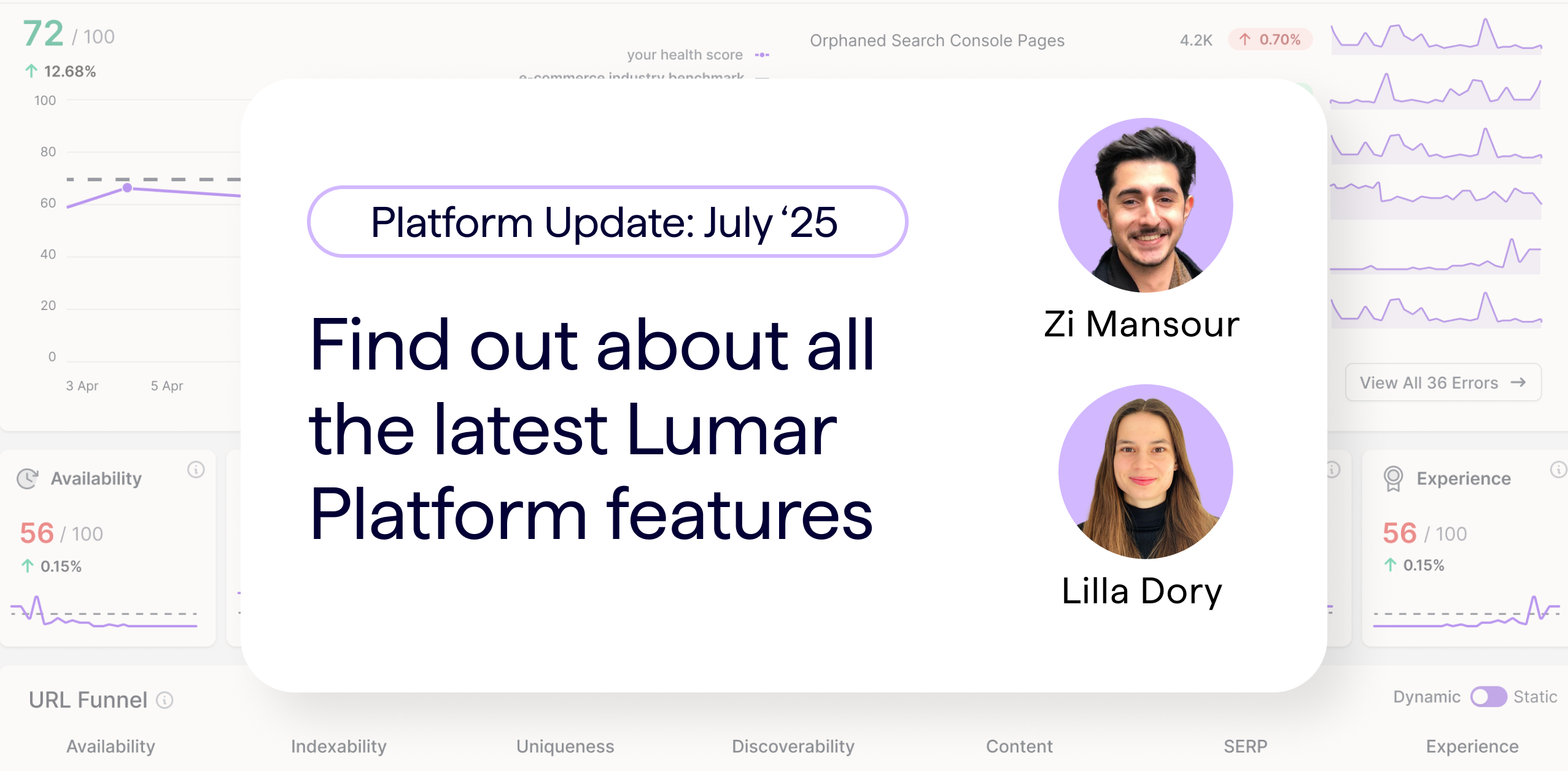Showing the ROI of technical SEO projects is an oft-cited challenge for those working both in-house and on the agency side of search engine optimization.
In this Lumar webinar session, learn how to put real numbers to your SEO project proposals to drive more buy-in and secure more resources for your technical SEO projects.
Organic Strategy Director Rasida Begum of Croud will show you how to demonstrate the impact of your SEO projects with an SEO forecasting calculator – and how to get the numbers you need to coordinate better with other teams and leadership stakeholders.
This on-demand webinar session covers:
- The challenges of demonstrating ROI for technical SEO projects
- How to quantify the revenue risk associated with delaying on technical SEO fixes on your website
- How to quantify revenue opportunity for new SEO projects
- How to use the SEO Forecasting Calculator spreadsheet
Watch the full session on-demand above (including Q&A and audience poll results), or read on for our top takeaways.
The ROI challenge for technical SEO
In our live poll with webinar attendees, 85% said they currently struggle to convey the ROI or benefits of SEO projects to their stakeholders.
“Calculating return [on investment] is something we’ve all faced at some point in our career,” Begum says in response to the poll results.
According to Begum’s own research, during which she surveyed SEO teams across 20 brands (including both in-house and agency teams), 50% of the teams surveyed said that a lack of being able to effectively communicate return on investment for proposed SEO efforts has stopped a project from moving forward.
Begum found that this is a struggle for SEO teams across both core ‘streams’ of tech SEO projects:
- Fixing bugs and existing issues
- Changes at scale across the whole site or across certain page templates
“The good thing is, it is absolutely possible to calculate a return on SEO projects, in particular for tech SEO,” she says.
To help these technical SEO professionals better convey the ROI of their SEO work, Begum recommends quantifying the benefits.
To that end, Begum created her easy-to-use SEO forecasting calculator.
“The first step is, you have to organize your existing data,” she explains. “You need to understand your page groups. Start by categorizing and segmenting.”
“For example, if you’re an e-commerce site and you’re looking at everything from a single URL level, it’s not giving you an understanding of what’s happening or where the root of a problem is.”
“So you want to start categorizing, for example, landing pages across categories together, PDPs (product pages) together, homepages together, brand or campaign pages together — then you can isolate issues but also quite quickly understand when a problem happens; you can segment it.”
She also stresses the importance of making sure that your revenue or lead-generating data is available at URL level. That way, you’ll have the data you need to understand the potential size, or opportunity size, of the issue.
“Once you have your data organized and you have confidence [in it], we can move forward and calculate a return.”
How to quantify ROI for technical SEO bug fixes
“What I love about bugs and existing issues is that they already have data attributed to them because they exist in the current structure [of your website],” Begum says.
In general — and especially for SEO dev tickets that are sitting in a backlog and not being actioned quickly enough by the team — Begum advises SEOs to create reports and attach them to the dev tickets to share why these tickets matter.
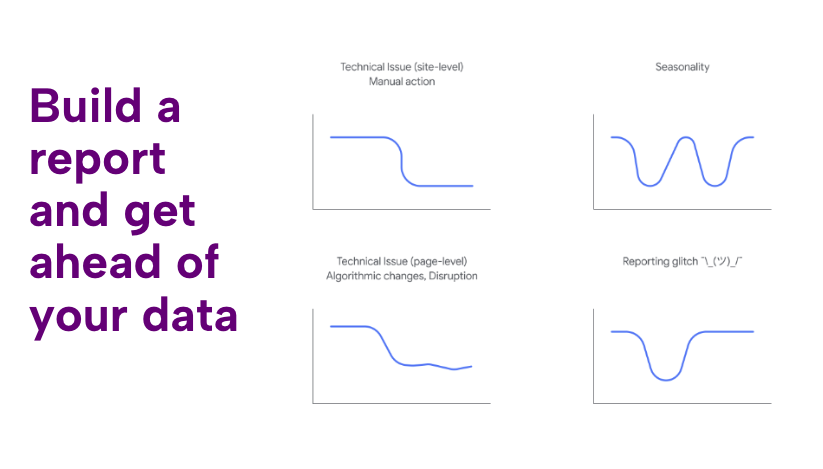
“Start to understand what’s happening at that page level, or the category group level, or page type,” she says. “And then isolate it so you are able to monitor it.”
It is important to be able to spot technical issue trendlines. Often they fall sharply and steadily decline from there. And you can see that over time, SEO performance is only going to get worse if that particular issue isn’t fixed.
Calculating revenue risk for unresolved SEO issues
Calculating the revenue risk of unresolved SEO issues boils down to 3 key steps:
- Calculate the daily average revenue for the page (or page group) that’s affected by the SEO issue you are seeking to solve.
- Estimate the number of days it will take your team to fix the issue
- Multiply the daily average revenue for the affected pages by the number of days it will take your team to fix — this shows you the amount of revenue that is at risk from the unresolved issue.
To start, Begum advises calculating the average daily revenue for the group of pages you are working on.
Using the daily average revenue for a page or page group is helpful to use here rather than actual daily revenue, as actual daily revenue can often be volatile.
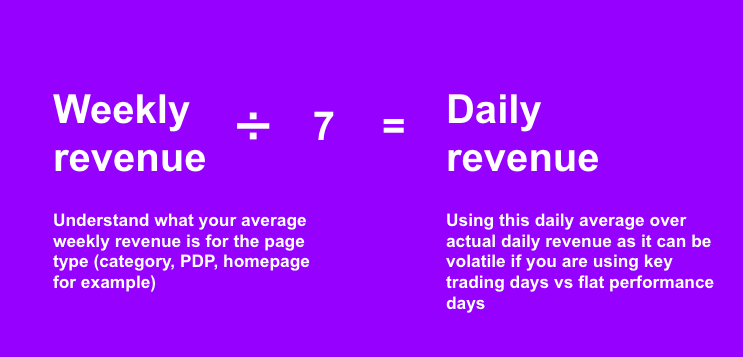
The next step is to estimate the number of days it will take your team to fix the issue and to multiply this by your average daily revenue. This will show you the revenue that is at risk by not addressing the issue sooner.
Begum stresses that it is important to not be abrupt with colleagues during these discussions.
“You want to approach it sensitively,” she says. “Say, ‘Hey, we’re contextualizing things and we’re trying to understand risk better in our team and this is how we’re going about it. Would you like to feed into the amount of days it might take to fix?’”
“We don’t want to break relationships. We want to make them stronger.”
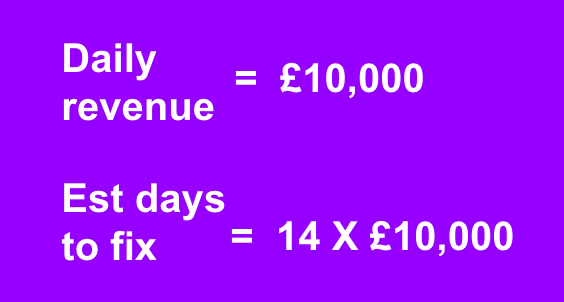

Begum’s example points to a Revenue at Risk of £140,000.
She notes how this is not described as a loss, but rather an estimation or projection of the cost to the business if this issue isn’t addressed.
Forecasting revenue opportunities for new SEO projects
When proposing new SEO projects, Begum recommends SEOs calculate the potential revenue opportunity.
This involves marrying up your existing data with estimations.
“It’s key to remember that every SEO issue will have a keyword related to it,” Begum says.
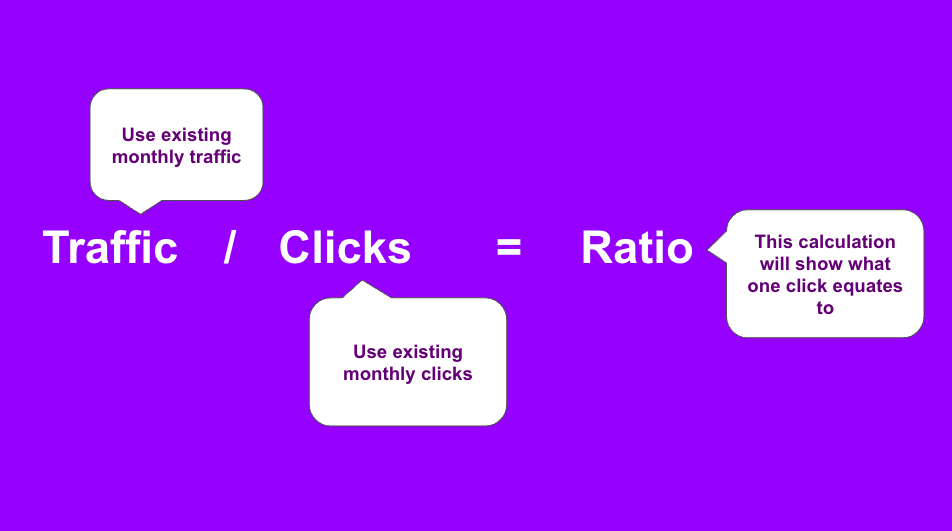
We then need to work out the relationship between traffic and clicks. As Begum notes, one click does not equal one session.
Begum suggests that we divide our existing monthly traffic by existing monthly clicks in order to get the ratio – i.e. what one click equates to.
We then want to understand what we will get from this new SEO project in terms of clicks.
That involves taking your CTR (you can even use an industry benchmark, here – but Begum advises that “it’s better to use your own data over borrowed data” when possible) and multiplying that with the search volume of the keywords. This gives us the click estimate.
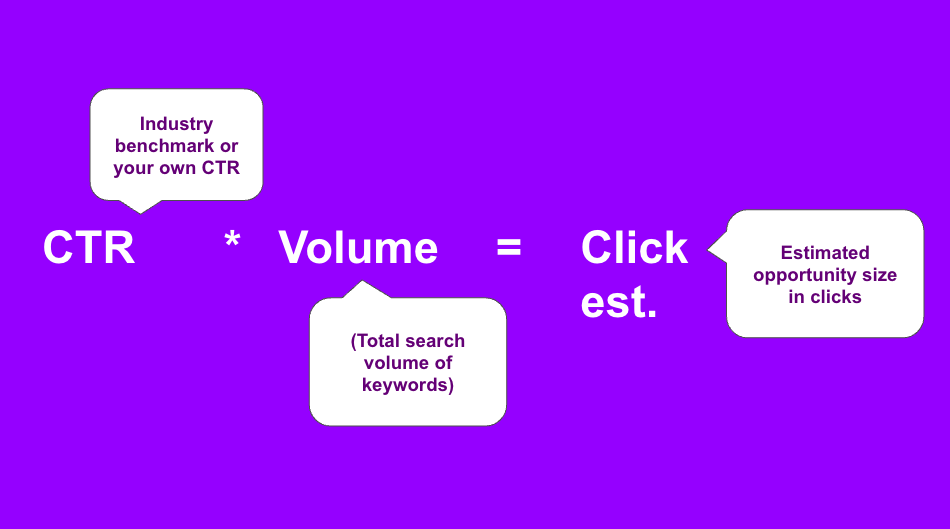
Two things to remember with the above calculation:
- Search Console generic keyword data can be used over click curve.
- Search volume total should be defined by what can be actioned in your forecasting timeline.
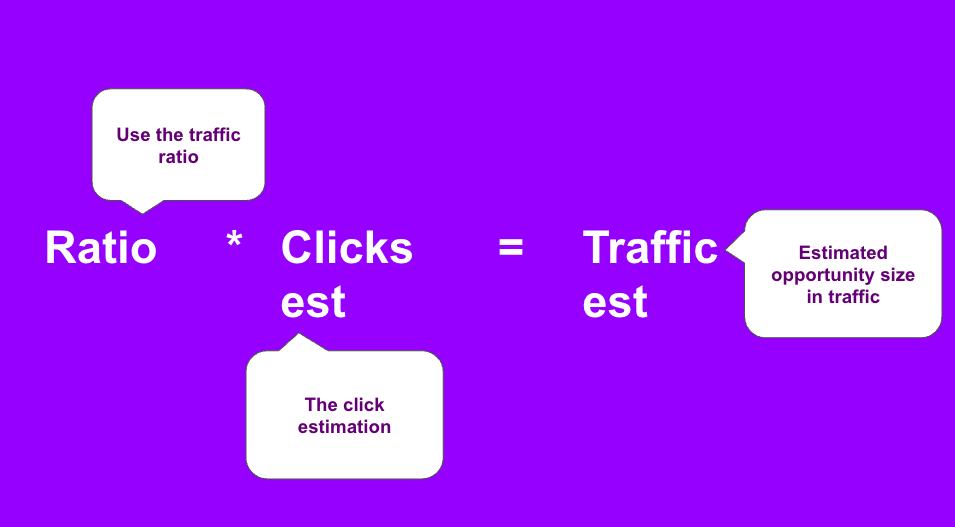
Next we want to work out the estimated opportunity size in terms of traffic estimates. We do this by multiplying the ratio and the clicks estimation together.
Using that traffic estimation and multiplying it by the conversion rate, we can get our projected transactions.
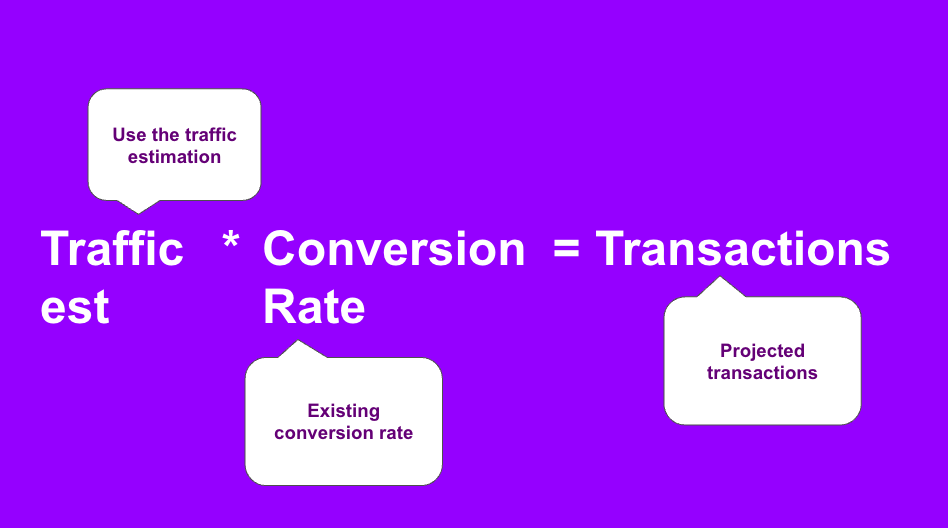
And, finally, using this transaction estimation and multiplying it with you Average Order Value (AOV) will give you your projected revenue.
“The great thing about forecasts is they are objective so can be challenged with numbers,” Begum says.
She also reminds us that many areas of marketing use similar approaches to projections. It might be relatively new in the field of tech SEO, but the principles are well-established.
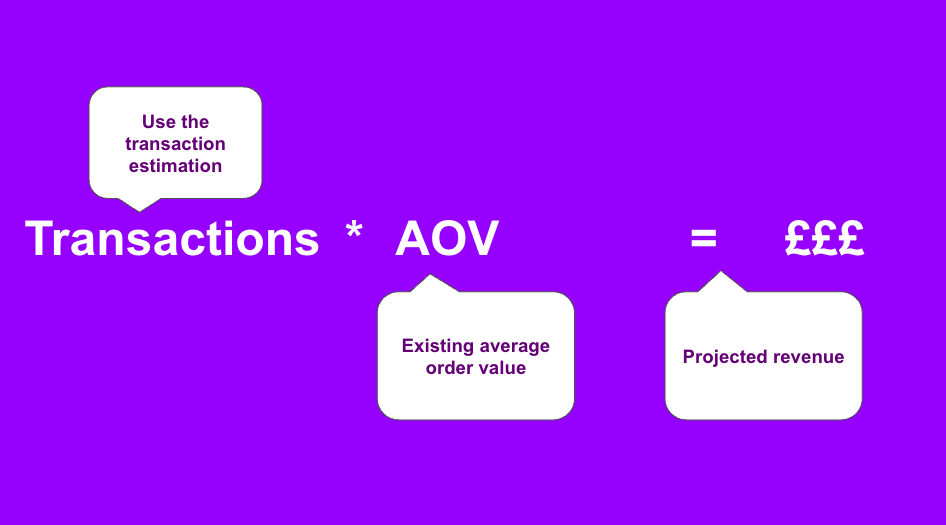
This table compiles all of the key SEO opportunity forecasting calculations:
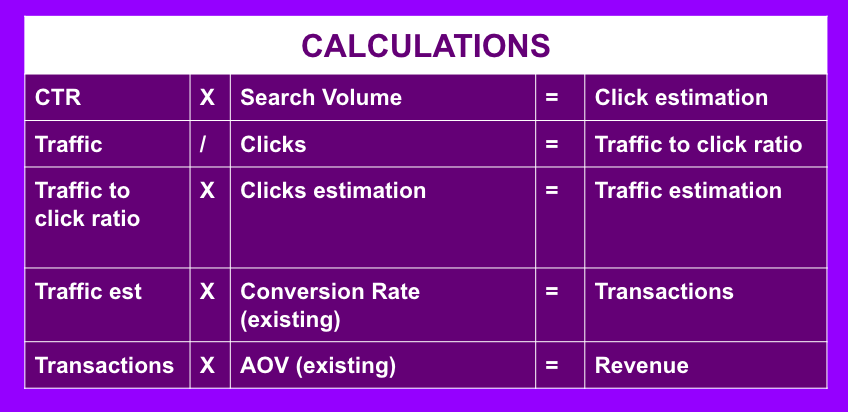
Begum has taken the above formulas and created one easy-to-use SEO forecasting calculator, which you can access for free. Try it out yourself — simply make a copy and input your own data into the pink-highlighted fields.
“It is a lot of work getting things signed off,” Begum says, “But when it is live and you’re able to see it, it’s really exciting.”

Meet the Webinar Speakers
- Rasida Begum, Organic Strategy Director, Croud
- Host – Emily Whalen, Technical SEO, Lumar
Don’t miss the next Lumar webinar!
Sign up for our newsletter below to get alerted about upcoming webinars, or give us a follow on LinkedIn or Twitter/X to stay up-to-date with all the latest news in website optimization.
Want even more on-demand SEO webinars? Explore the full library of Lumar SEO webinar content.





